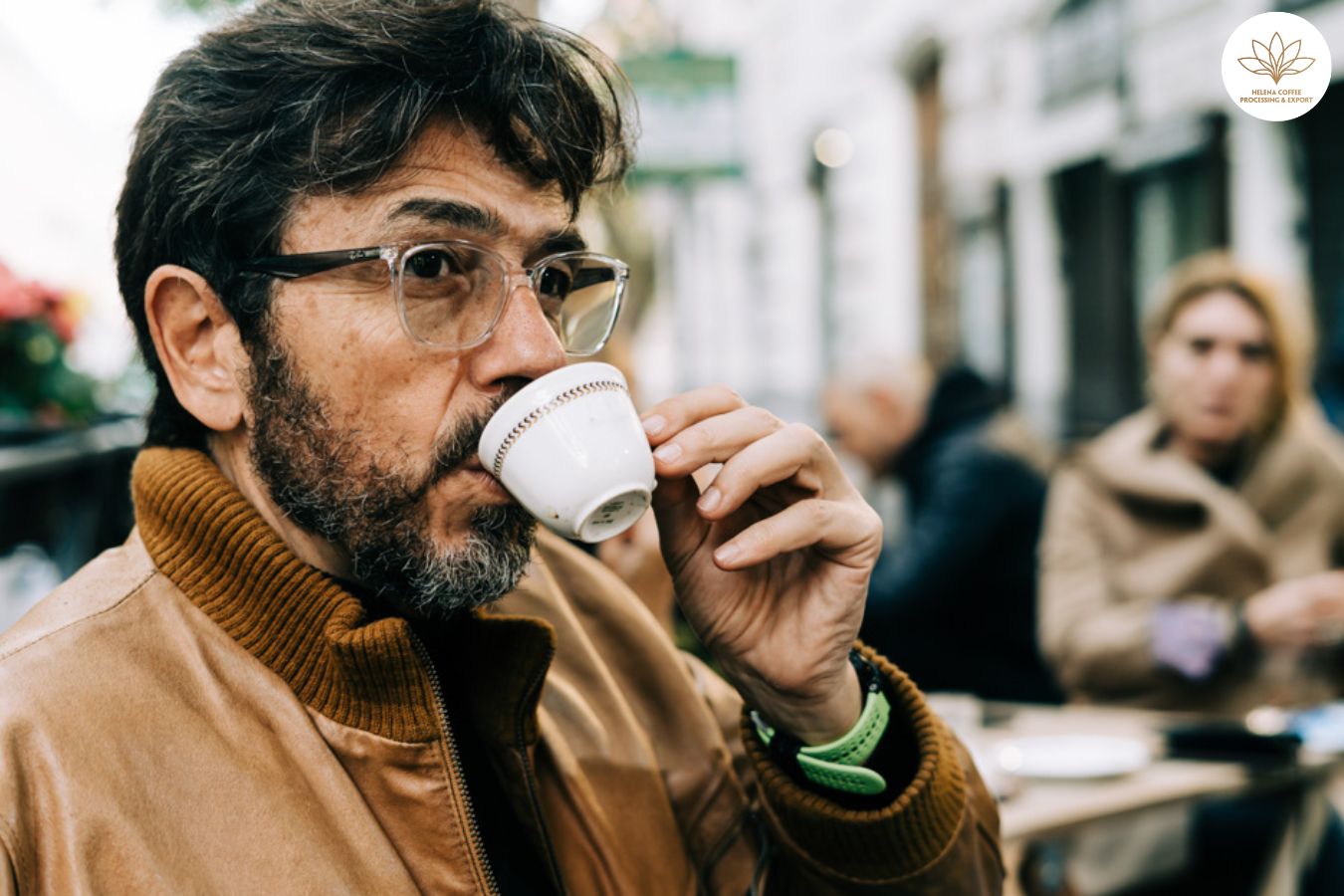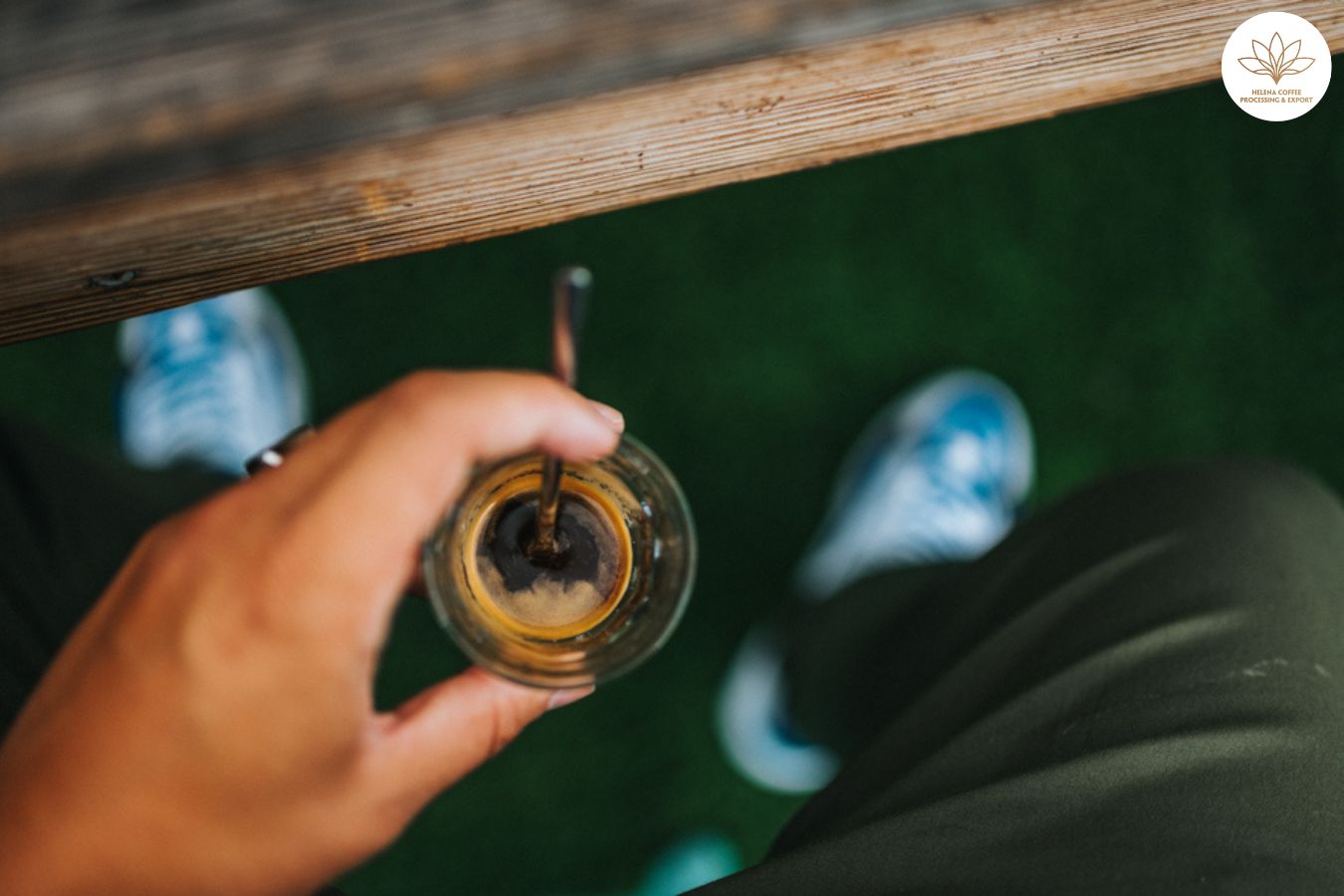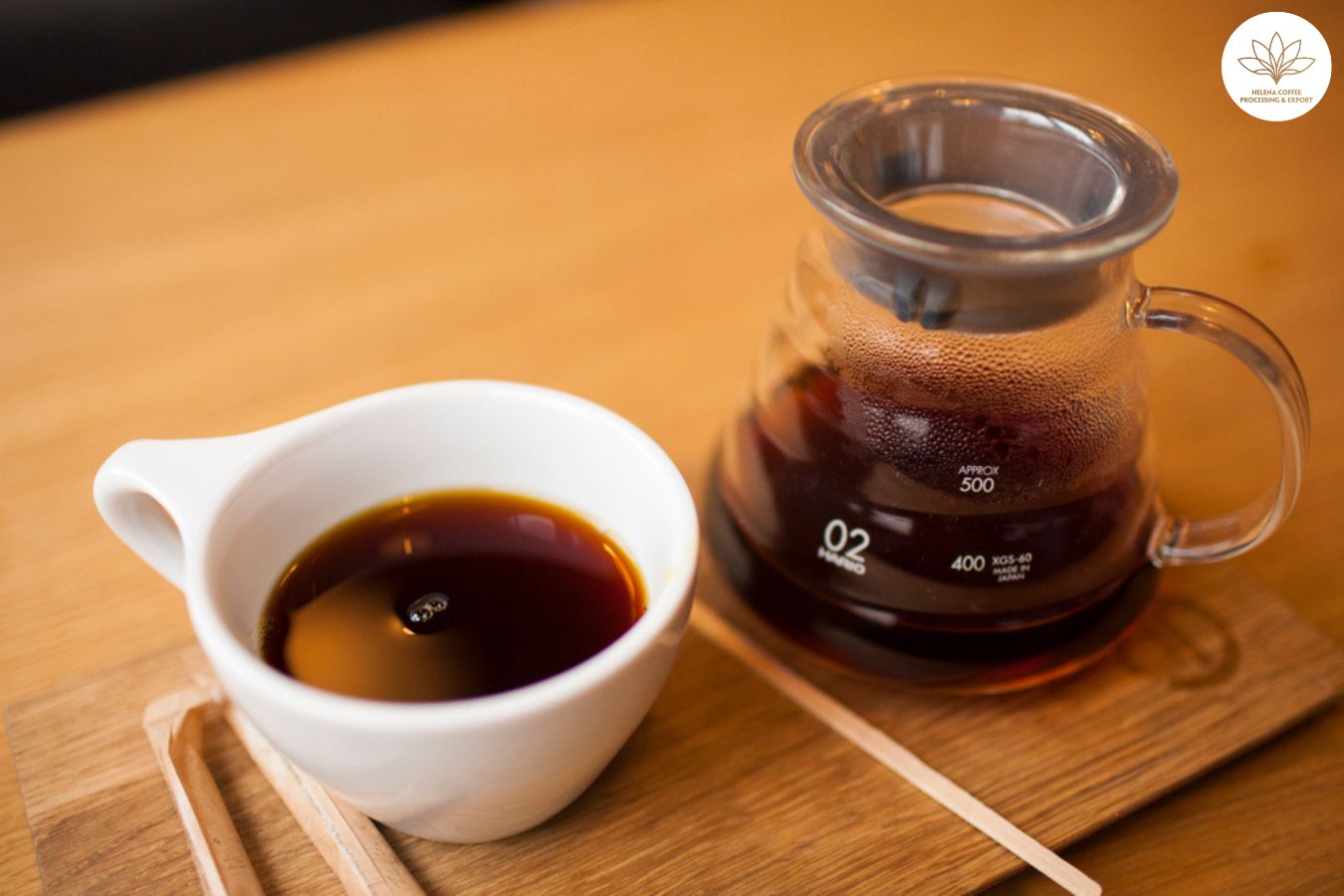
Europe And America Coffee Consumption Trends: The United States and Europe stand as two colossal coffee-consuming giants on the global stage. Data from the International Coffee Organization reveals that in 2021, Europe was at the pinnacle, consuming a staggering 54,065 bags of 60 kilograms each, thus claiming the title of the world’s most voracious coffee-consuming region for the year.
Trailing not far behind, North America imbibed nearly 31,000 bags of the same weight in the same timeframe, securing its position as the third-largest coffee market, surpassed only by the combined consumption of Asia and Oceania in 2021.
For decades, the European and North American coffee markets have been perceived as distinctly separate entities, each with its unique characteristics and preferences. Yet, as the wave of specialty coffee surges through both territories, and as specialty coffee brands increasingly adopt parallel marketing strategies, a compelling inquiry arises: Just how disparate are their coffee cultures?
To untangle this caffeinated conundrum, I engaged in conversations with two seasoned coffee experts. Continue reading to discover their insights on the evolving trends of coffee consumption in Europe and the US.
ANALYZING COFFEE CONSUMPTION TRENDS IN EUROPE AND THE US
Before delving into the nuances that distinguish European and American coffee-drinking habits, it is essential to quantify their coffee consumption levels.
Turning our attention to the US, we observe a notable upward trajectory in coffee consumption across the nation in recent years. The National Coffee Association’s figures indicate a robust 14% surge in coffee consumption from January 2021 to March 2022, which stands as the most significant increase since the NCA’s inception of tracking American coffee consumption trends, hitting a two-decade peak.

The NCA’s Spring 2023 National Coffee Data Trends report sheds light on the fact that 65% of American adults had partaken in coffee drinking the day before the survey. This translates to an impressive daily total of approximately 491 million cups of coffee.
Furthermore, the joint 2023 National Coffee Data Trends Specialty Coffee Report by the NCA and Specialty Coffee Association revealed that 59% of Americans indulged in specialty coffee the previous day, marking a 2% ascent from July 2022, a notable statistic amidst climbing inflation rates.
In contrast, Europe’s coffee consumption comprises roughly a third of the worldwide total. CBI statistics highlight that the European Union boasts one of the globe’s most substantial average annual per capita coffee consumption rates, weighing in at an estimated 5kg per individual annually.
Importing and Roasting: A Tale of Two Continents
When it comes to importing, Europe leads the global stage as the largest importer of coffee. The continent brought in upwards of 3.62 million tonnes of green coffee in 2021 alone, depicting an average annual growth of 1.6% from 2017 to 2021. Germany notably stands out as the leading green coffee importer of Europe, responsible for approximately 34% of the continent’s total annual imports.
Both Europe and the US hold significant positions as major coffee roasting hubs. Within Europe, Italy and Germany emerge as the foremost coffee roasting powerhouses, closely tailed by France, the Netherlands, Spain, and Sweden.
DISSECTING AMERICAN COFFEE PREFERENCES: FILTER FIRST
The coffee narrative in the United States is relatively youthful, spanning just a few centuries, which pales in comparison to the deep-rooted coffee traditions of European nations. While coffee first graced American shores in the 17th century, it wasn’t until the 1940s that a distinct coffee culture began to blossom.
Today, America’s coffee scene is anything but monolithic, boasting a dynamic and eclectic array of coffee experiences.

Recent data from the Spring 2023 NCDT report highlights that a significant 41% of American coffee enthusiasts lean towards automated filter brewers when preparing their daily brew at home, making it the most preferred method over other popular options like capsule machines and cold brew.
When exploring the realm of espresso-based drinks, lattes reign supreme as the favored choice, with cappuccinos trailing closely behind. Interestingly, straight espresso secures a joint second place with cappuccinos, as 16% of American coffee drinkers opt for this potent shot, a choice typically more synonymous with European tastes.
A distinctive feature of the American coffee palate is the fondness for flavored coffee beverages, as the NCDT report notes that 32% of Americans enjoyed such drinks in the past week. The top-ranking flavors include:
- Vanilla
- Mocha
- Caramel, toffee, butterscotch, and hazelnut
- Irish cream
- Pumpkin spice
Embracing Innovation in Coffee Consumption
On a broader scale, the US is often at the forefront of embracing new coffee trends and technological advancements, outpacing many other nations, including those in Europe.
Bill Murray, President and CEO of the National Coffee Association, reflects on the market’s resilience.
“The US coffee market has nearly bounced back from the disruptions of Covid-19. The pandemic shifted where Americans enjoyed their coffee but didn’t diminish their consumption. In fact, it solidified emerging trends, such as the growing preference for drive-thru and delivery services, as well as the integration of mobile apps into the coffee-buying experience,” he explains.
The 2023 Spring NCDT report corroborates this, revealing that the utilization of drive-thru and app-based ordering for coffee pickup and delivery has maintained its upward trend, remaining well above pre-pandemic levels. For instance, about 59% of individuals who bought their coffee from a coffee shop, convenience store, or service station on the previous day utilized a drive-thru service—an 11% leap from January 2020.
In parallel, the report indicates a 5% uptick since January 2020 in app-based coffee orders, with 29% of the day’s coffee consumers turning to digital apps to secure their caffeine fix.
EUROPE’S COFFEE TAPESTRY: A MULTIFACETED PORTRAIT
Europe’s coffee culture is as varied as its tapestry of countries, each thread representing a distinct tradition that defies broad generalizations. The continent celebrates a kaleidoscope of coffee customs, showcasing an intricate array of consumption trends that are as diverse as the nations themselves.
Coffee’s journey to Europe in the 17th century marked the beginning of an era; the subsequent emergence of coffee houses across Europe wove a rich fabric of social and cultural interaction that persists in many regions to this day.
The influence of European coffee culture on the global stage is profound. A pivotal moment was the inception of the espresso machine, patented by the Italian innovator Angelo Moriondo in 1884. This invention spread like wildfire, initially through Italy and then across Europe, ultimately becoming a staple in coffee establishments worldwide.
While the US has traditionally had a penchant for filter coffee—a trend seeing a shift with the rising popularity of espresso drinks—some European regions share this preference. The Nordic countries, for example, are not only ardent consumers of filter coffee but also pioneers in the global specialty coffee movement.
Delving into Europe’s Diverse Coffee Landscapes
Europe’s rich tapestry of coffee culture means that consumption patterns vary widely from one country to another.
Consider Greece, where the density of coffee shops is among the highest in Western Europe, with approximately 34.3 establishments per 10,000 inhabitants.
Petros Malousis, the Development & Operations Manager at CoffeeLab in Greece, provides insights into the distinct nature of Greek coffee culture. “Greek consumers have a coffee-drinking ritual that’s quite unique compared to other markets,” he explains. “Freddos hold a special place in the hearts of Greeks, and that’s a love affair that’s unlikely to wane.”
In Greece, there’s a harmonious coexistence of modern specialty coffee shops and time-honored kafeneia, where traditional Greek ibrik coffee, also known as ellinikó, is the brew of choice. This method of coffee-making, using an ibrik or cezve, is also cherished in countries like Croatia, Serbia, Cyprus, and Turkey—the latter straddling the boundary between Europe and Asia.
Despite attempts by global coffee chains to penetrate the Greek market, Petros notes that few have found lasting success.
In a contrasting scene, Switzerland, with a higher coffee consumption rate than Greece, has far fewer coffee shops per capita. On the other end of the spectrum, Norway stands out for its high per capita expenditure on coffee annually.
Other European nations, such as Spain, Italy, Austria, Germany, and France, are celebrated for their distinctive coffee cultures. In Italy, the cultural stature of espresso is so significant that the nation has sought UNESCO heritage recognition for it multiple times. Furthermore, the cost of an espresso in most Italian bars is around €1 (US $1.07), a phenomenon influenced by pricing regulations and the challenging environment for specialty coffee shops and roasters to gain a foothold in the Italian market.
CONVERGENCE OF COFFEE CULTURES ACROSS THE ATLANTIC
While espresso has long held a place of honor in European cafes, filter coffee has been the quintessential American counterpart, savored both within the comfort of home and the buzz of coffee shops.
In recent times, however, the Atlantic divide in coffee consumption habits has been narrowing, with trends from Europe and the US showing signs of a harmonious blend.
The quest for convenience has become a shared theme among coffee aficionados on both continents, a trend that the pandemic has only served to amplify. Coffee purveyors in Europe and America alike have embraced technologies like cashless transactions and automated ordering to cater to this shift.
Additionally, the appetite for ready-to-drink (RTD) coffee beverages is swelling in both territories, particularly among the younger demographics who prize the dual delights of expediency and excellence. Cold brew, too, has etched its mark as a fixture in the coffee landscape, though its star shines somewhat brighter in the US.
The Ascendancy of Specialty Coffee
Yet, the most remarkable evolution in the coffee narrative over the past decade is the burgeoning demand for quality and sustainability in coffee sourcing and production in both Europe and the US.
In Greece and other European domains, Petros observes a marked upswing in the pursuit of premium coffee experiences. “There’s been a significant uptick in the appetite for 100% arabica and single-origin coffees in recent years,” he notes. “The specialty coffee movement has taken root, with the 18 to 34-year-old demographic showing heightened interest.”
Across the ocean, Bill foresees an unabated surge in the US coffee market’s growth. “Consumers now have an extensive selection of coffee and related beverages that cater to their evolving preferences and requirements,” he says. “I anticipate that the growing health consciousness among consumers will further fuel interest in coffee’s unique health benefits.”
Bill envisions these dynamics propelling the already soaring coffee consumption in the US to new heights. “Such factors will continue to boost the nation’s record-high coffee indulgence,” he affirms.
Although unmistakable cultural distinctions in coffee rituals remain between the US and Europe, a shared trajectory is emerging. The appetite for expedient yet premium coffee offerings is a common thread weaving through both markets.
Yet, the reign of espresso persists throughout Europe, as does the enduring preference for filter coffee in the US. The future, however, holds its secrets on whether these traditions will stand the test of time or give way to new coffee paradigms in both regions.
FAQS:
- How Is Specialty Coffee Evolving Outside Of More Established Markets?
- Assessing The Current Innovation Landscape Of Nordic Specialty Coffee Roasters
- Unprecedented Peaks In Cold Coffee Sales – Is Specialty Coffee On The Same Track?